MUSLIM MOSQUES
» Welcome to Ho Chi Minh City (Otherwise Known as Saigon)
» Things to See in Ho Chi Minh City (A-Z): Chợ Lớn
» Cao Dai Temple
» Chu Chi Tunnels
» Parklife
» Reunification Hall
» Saigon Zoo
» Street Markets
» Suoi Tien Amusement Park
» Temples
» Things to Buy: Vietnamese Modern Art
» Things to Eat in Ho Chi Minh City: Restaurant Guide
» Places to Party in Ho Chi Minh City: Bars and Clubs
» Places to Stay in Ho Chi Minh City: Saigon Hotels
»
Getting There: Ho Chi Minh City's Tan Son Nhat International Airport
» Further Afield: Phu Quoc Island
» Buying Real Estate in Vietnam?
» Learning Basic Travel Vietnamese
» Media in Vietnam
|
Trumpetted /// SUỐI TIÊN AMUSEMENT PARK
THERE MAY BE CHURCHES AND EVEN MOSQUES IN HO CHI MINH CITY, BUT THIS IS NONETHELESS A VERY BUDDHIST CITY. As far as I can understand it, this was in the days of the Hung kings. Dragons and phoenixes are everywhere in modern Vietnam if you care to look, in temple design and even in the idioms of daily conversation... you can also see a lot of dragons and phoenixes at Suối Tiên Amusement Park. There are four restaurants here and there are names are, creatively enough, Dragon-Phoenix 1, Dragon-Phoenix 2, Dragon-Phoenix 3, and Dragon-Phoenix 4. There is a temple to the Hung Kings, and what is claimed to be the largest dragon statue in south-east Asia.
You can get here on bus 19 from Ben Thanh Bus Station.
Dolphins jump in the pools. Jill Harness at Neatorama names this as one of the 15 off-the-wall theme parks in the world. It's right up there with Diggerland, in the UK. Generally speaking, you have to get behind a paywall to chill out. The Saigon Zoo and Botanical Garden is one such place. Flanked on one side by slowmoving river and protected by a 13,000 Dong entrance fee, the zoo has become for me a regular hangout, just like Ueno Park was in my early days in Japan! Like Ueno Park, this place oozes with atmosphere. It is in fact one of the oldest zoos in the world. only natural there are ponds teeming with crocs here.
Just before I made it to Suoi Tien Amusement Park in December 2010 I was coerced into sitting for a paper exam for the Soka Gakkai Buddhist organization in Japan.e. All about the Three Obstacles and the Four Devils and the Ten Cold Hells and the 3000 Worlds in a Single Moment of Life. Soka Gakkai should look to Vietnam if they want to bring life to their esoteric concepts. We shouldn't fall into the trap of thinking of way our thinking is the best, it is all just culture. In Iceland and Japan people hunt and eat whales, while in Australia they are revered as spiritually enlightened beasts. Whether or not they are spiritually enlightened beings has never been shown, and if they were, why would they allow themselves to be hunted? I read a story in the Guardian recently about a zoo in China which serves hippopotamus foot meat and other exotic fare for visitors. It made me wonder if Chinese go to zoos to salivate at all the animal flesh on display, rather than marvel at the evolutionary biodiversity, like we apparently do in the West. My countryman Lost Laowai lost in China has some interesting observations to make on this matter, and I agree with his take. Saigon Zoo is not quite the circus you might find in the Middle Kingdom, but the behavior of some zoogoers may disturb those from the West. Shouting at animals and even throwing objects at them to elicit a reaction is common. .
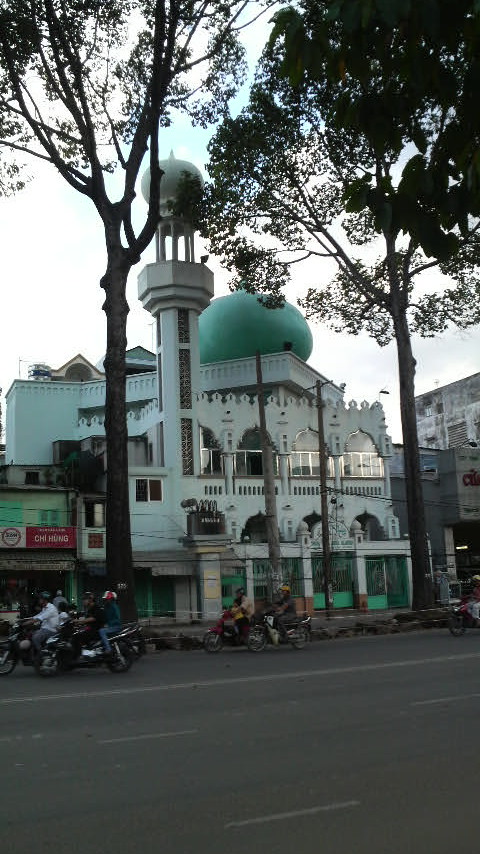
THÍCH QUẢNG ĐỨC MONUMENT // intersection of Nguyễn Đình Chiểu Street and Cách mạng tháng Tám Street, Quarter 3.
I have walked right past this place a few times this year (2010), and even stopped to take a few photos, all the while completely oblivious to the chilling event which happened here nearly 50 years ago. They really need to put up some signs or a plaque or something, I suppose there is a plaque but it is in Vietnamese only, so most foreign tourists won't understand it. As I have recently discovered, this is the grave of a Buddhist monk called Thích Quảng Đức, who set fire to himself on the street in 1963. In the process, he set fire to his religion, his (shortlived) nation... and in fact the entire world! Nominally at least, Thích Quảng Đức killed himself to protest against the new government of the then Republic of South Vietnam, which was pro-Catholic and supposedly biased against the Buddhist majority. The event was captured by photographer Malcolm Browne, who went on to win a Pulitzer Prize for his work. When (Catholic) American President Kennedy saw the image he was said to have exclaimed: "Jesus Christ... This sort of thing has got to stop." (According to Famous Pictures Org.) Thích Quảng Đức was 66-years-old when he committed his very public suicide. Upon his death, he was proclaimed a boddhisatva ("enlightened one"). While Thích Quảng Đức martyred himself his for Buddhism, he has since become a hero in Socialist Vietnam. They have a lot of heroes in Ho Chi Minh City; practically every street is named after one of them.
CHOLON MOSQUE

Click here to view map
Chợ Lớn Mosque
Chợ Lớn Mosque is one of the four mosques in Ho Chi Minh City, says Vanishing Saigon. If you come here at lunch or dinner time you can dine in a Halal restaurant. According to Vanishing Saigon, Vietnam's Muslims are among the oldest inhabitants of the country (Islam being practiced by the Chams from the mid 17th Century). At a protest in Hue, Government troops opened fire on Buddhist demonstrators, killing nine of them.
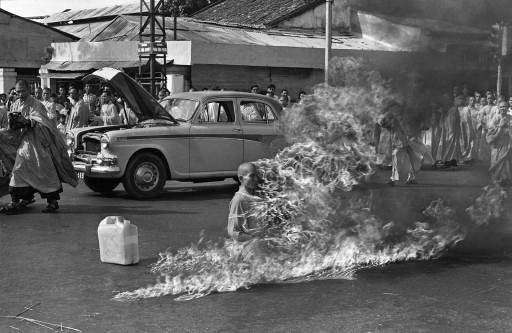
If you do go in for animals, there is a fair selection here. There is a pair of white tigers behind a glass wall, and the white tigers have blue eyes. Another exhibit claims to hold a pair of Indochinese tigers (although the name is somewhat of a stretch... is Myanmar really part of Indochina?)
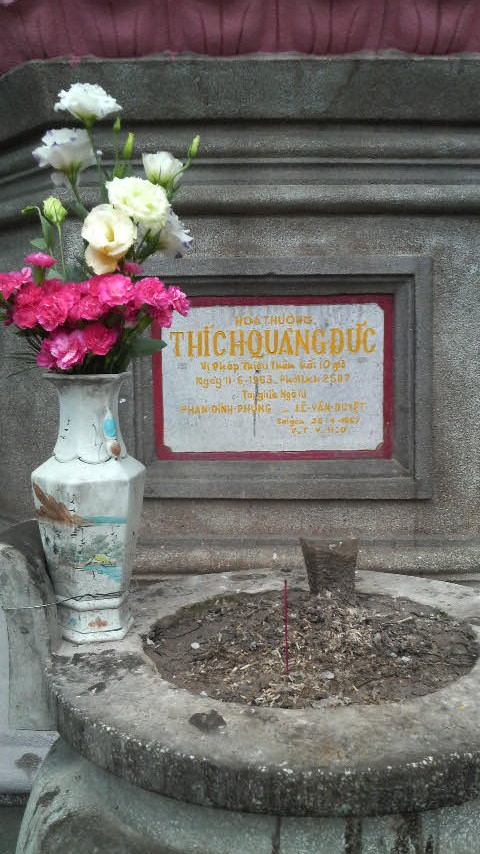
Phóng viên David Halberstam viết trên tờ New York Times[22]:
I was to see that sight again, but once was enough. Flames were coming from a human being; his body was slowly withering and shriveling up, his head blackening and charring. In the air was the smell of burning human flesh; human beings burn surprisingly quickly. Behind me I could hear the sobbing of the Vietnamese who were now gathering. I was too shocked to cry, too confused to take notes or ask questions, too bewildered to even think.... As he burned he never moved a muscle, never uttered a sound, his outward composure in sharp contrast to the wailing people around him.
born Lâm Văn Tức in 1897,Thich Quang Duc was a Vietnamese Mahayana Buddhist monk who burned himself to death at a busy Saigon road intersection on 11 June 1963. Buddhist orders in South Vietnam were in the middle of a war with the new President Ngô Đình Diệm, a Catholic. Across the road from that is a hotel or something with a cafe/bar on the ground floor. The gate into the zoo is adorned with blue letters proclaiming: "Thảo Cầm Viên".
The act itself occurred at the intersection[b] of Phan Dinh Phung Boulevard and Le Van Duyet Street.
In the satellite image (10°46′31″N 106°41′13″E / 10.775159°N 106.686864°E / 10.775159; 106.686864) of the Saigon intersection where Thích Quảng Đức performed his self-immolation, Phan Đình Phùng (now Nguyễn Đình Chiểu) Street runs NE-SW and Lê Văn Duyệt (now Cách Mạng Tháng Tám) Street runs NW-SE. On the western corner of the intersection stands a memorial to Thích Quảng Đức. For many years a Petrolimex fuel station stood on the northern corner, but this is being replaced with a memorial park for Thích Quảng Đức.
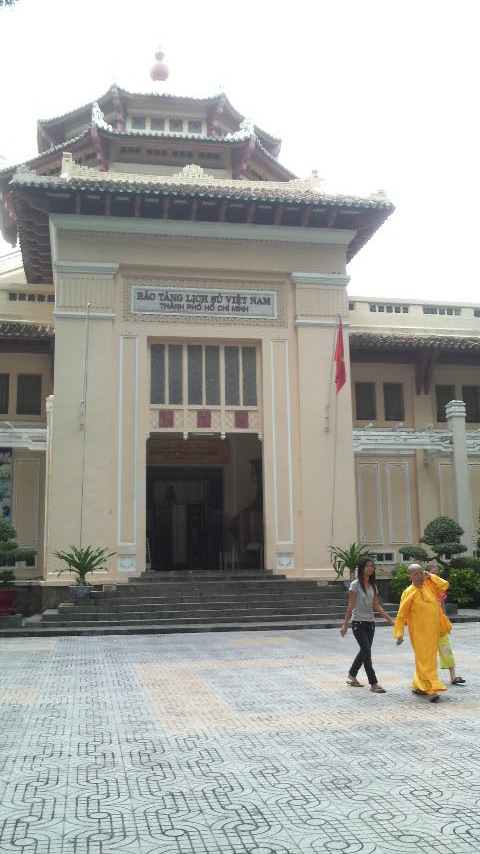
The Central Mosque is located at Dong Du Street in Ho Chi Minh City. Dong Du Street is located between Dong Khoi and Ba Trung Streets. It is about one kilometre (to the north) from Ben Thanh Market. You need to follow Le Loi Avenue and turn right to Dong Khoi Street and look for Sheraton Hotel. The mosque is quite old and had staircases.
The monks claim that his body was reduced to ashes except for his heart which while singed was still intact. The organ was declared Holy and is still kept as a holy artifact by the monks. Before Duc died he composed a letter to explain his actions and asked people to unite and work towards the preservation of Buddhism in Vietnam and around the world. This became known as the Letter of Heart Blood.
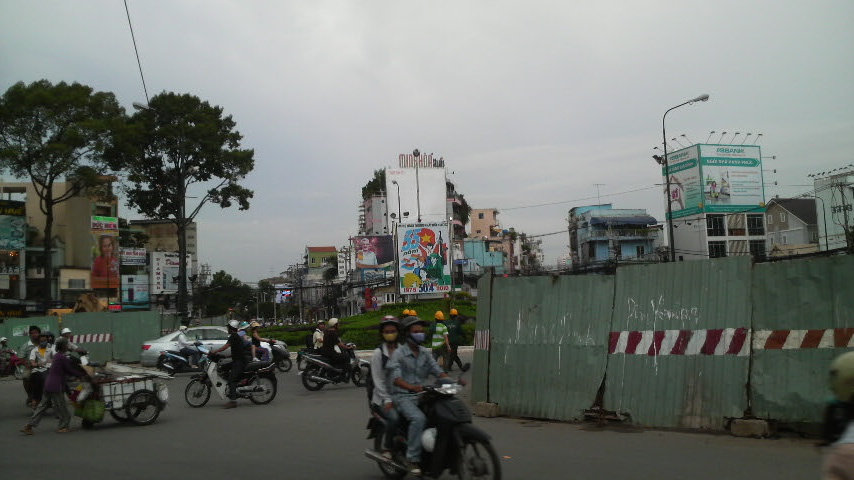
Thich Quang Duc was quick to point out (in letters left for the press) that his self-immolation was not an act of suicide, which would go against his Buddhist beliefs. Instead, Duc viewed the burning as a wake up call, a way to call attention to his cause. His death has been termed a "religious suicide" by Chinese Buddhism scholars, who state that it was religiously justified based on texts found dating back to the 5th and 10th centuries BCE. Others think the opposite, that this suicide was not at all religiously driven and was instead a political act.
Duc had burned himself in order to bring awareness to his cause, which was the belief that Vietnam was suffocating Buddhist tradition. He wanted the ban on flying the traditional Buddhist flag lifted, wanted Buddhism to have the same rights as Catholicism did, and wanted Buddhist monks to have the right to practice their religion, among other goals. Thich Quang Duc's self-immolation, along with the picture it created, did have some impact on these goals, including the overthrowing of the Catholic Diem regime that was in possession of South Vietnam..
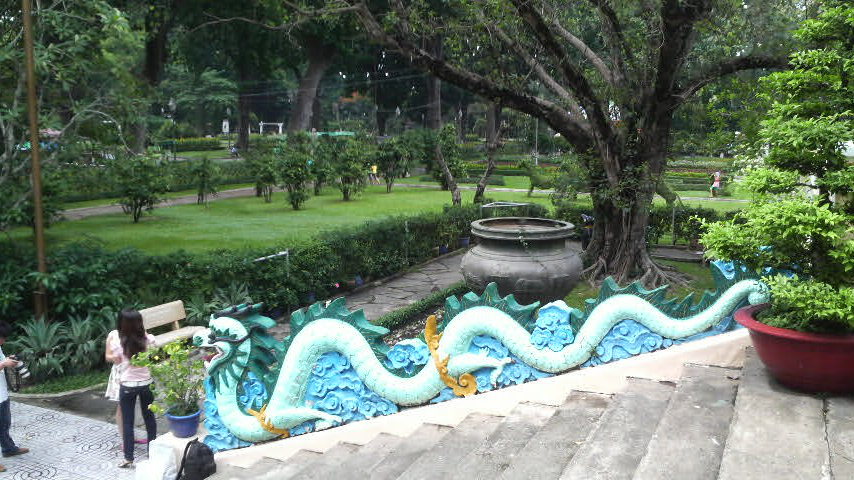
ON TO THE ANIMALS
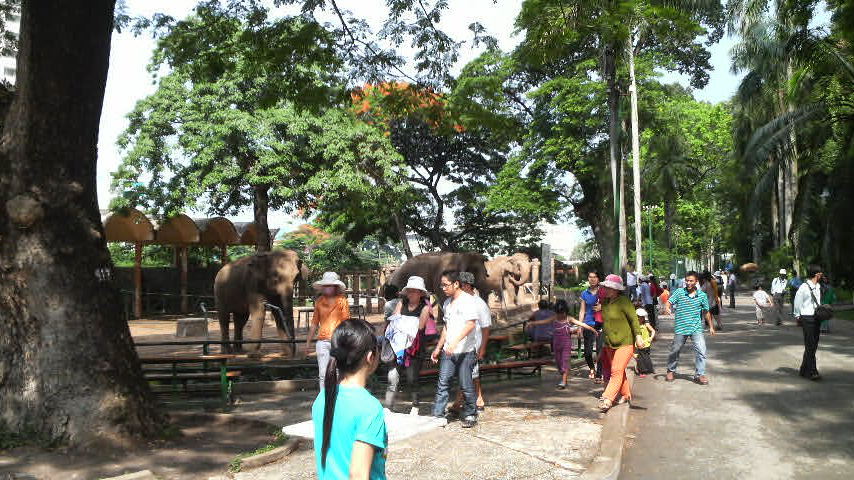
Wide leafy promenades make this the ideal place for a stroll. The construction was started on Feb. 23, 1868 and completed in 1871 by the French Goverhe first stone. From 1871 to 1887 it was called the Governor GeneralE½fs Palace of the South Part.
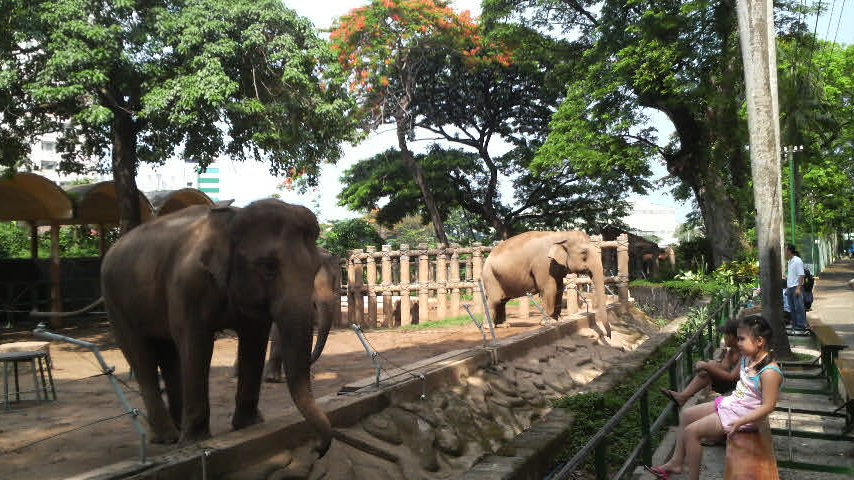
Often it is more interesting to watch the people watching the animals than it is to watch the animals themselves.

A solitary hippo entertains the crowds.
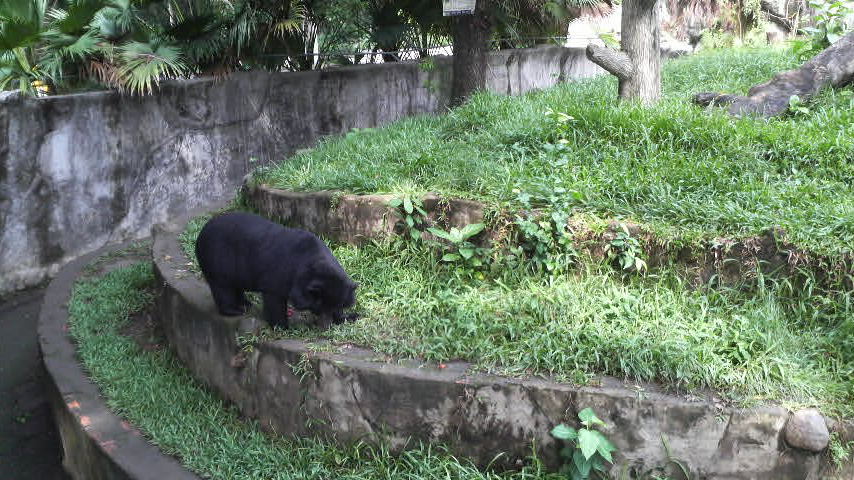
A bear in her/his enclosure.
RESORTS
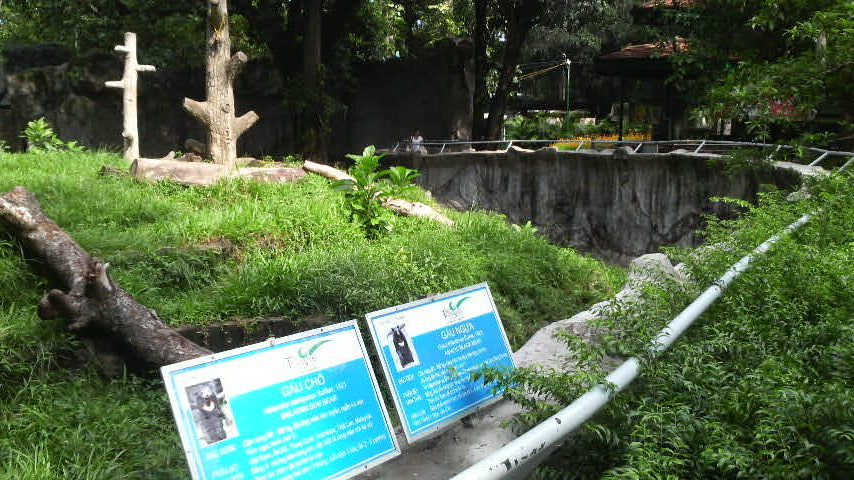
AND THE PLANTS
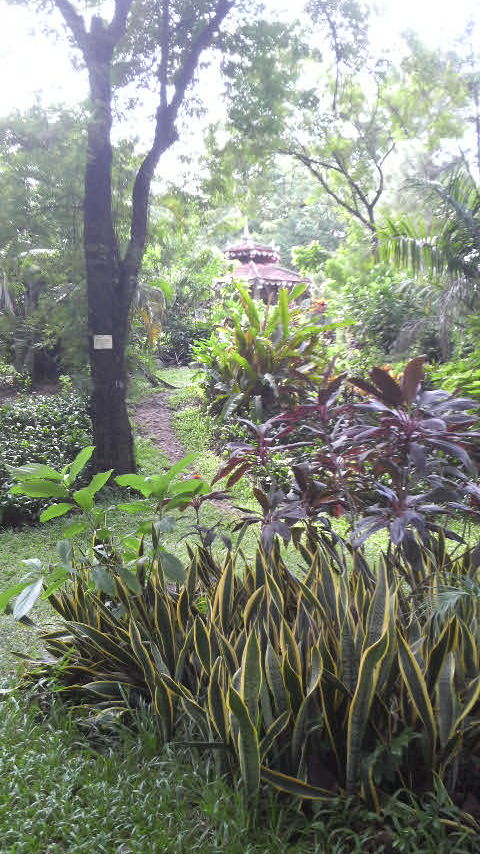
EATING AND DRINKING
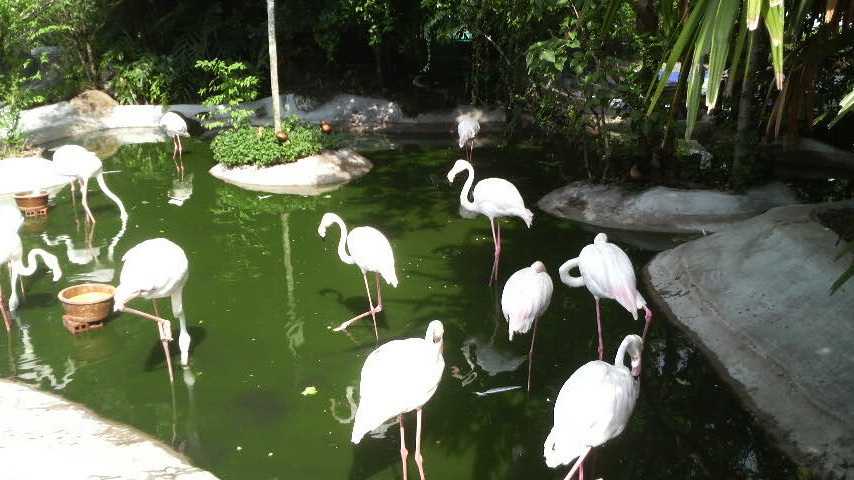
The Gatromoner says: "After wandering for a bit, it was time for snack! The park is dotted with food stands and deep-fried meat on a stick appeared to be the zoo's specialty. The Astronomer ordered the fried pork dumplings on a stick with hoisin sauce. Eating animals in between seeing animals was sort of difficult for me to reconcile, but The Astronomer had no qualms about it. He commented that the texture was nice and crispy."
WHAT OTHER PEOPLE SAY
Beauty and the Beast says: "'Leave it to the French to create a cage which is not really a cage,' laughed a friend of mine who, like many, studied French Feminist critical theory and postmodernism in the early nineties. She was referring to the Saigon ZooE½s Monkey House, which can be best described as a giant metal birdcage. It has the same plump curvy shape and thin vertical bars of the pretty brass penitentiary that housed your grandmotherE½s cockatiel...'"
Được quảng cáo là toạ lạc trên một vùng đất thiêng, công viên Suối Tiên trông tựa như một thiên đường Phật giáo. Nơi đây đầy rẫy những công trình kiến trúc đậm màu huyền thoại: tượng các con cóc khổng lồ, tượng long lân quy phụng, đầu rồng nặng 300 tấn
Suối Tiên còn có thuỷ cung, Vương quốc cá sấu, Bí mật rừng phù thuỷ
và đặc biệt là Kỳ lân cung nơi mô phỏng lại các tầng địa ngục
The beach in the picture is called Bai-sao and is with out doubt one of the most amazing beaches i have ever seen. We spent the time clearing the jungle and putting up a wall around the block to keep it from being moved in on by the fisherman, the rest of the time was enjoyed by drinking the local rum which at $1.50 a bottle was not to bad at all... Well from what i can remember it was not. Over time i will post more pics from the island.. and keep you posted as to when you can come over and enjoy the white sand crystal clear water and very cheap local rum for yourself."
Services : Swimming pool, tennis, beach games, beach volley ball, massage, 200 place meeting room, restaurant with special sea-food.
Taking and meeting tourist services at Thien Hai Son Resort.
Receptionists are ready to serve visitors with pleasure.
90 rooms and bungalows of the resort equipped with AC air-con, safety box, private bathroom.
Facilities: Swimming pool; Beauty salon and Health club: body, foot & hand massage & sauna parlor; Jacuzzi; Badminton and Foot ball field; Karaoke club.
Water sports: water-skiing, snorkeling and scuba diving.
Services: tour desk for fishing, hiking, snorkeling, scuba diving, camping, eco-tour, sightseeing tour, car and motor-bike rental.
Thousand Star Resort US$18 Check rates online
Thuan Thien Hotel US$12 Check rates online
Tropicana Resort US$25 Check rates online
Yen Phuong Minihotel US$8
"In another story, Tran Minh Phuong, 23, an accountant at a toy-making company in Ho Chi Minh City (HCMC) says she earns VND1.8 million ($113) a month and has to pay a third of that in rent for her little one-room apartment.
"They all dream ofrice sky-rocketing that is simply impossible.
"Not only locals but about 81,000 expats in Vietnam have also suffered from soaring rents and greedy landlords, even though their income is much higher..."
(For full story click here.)
Sedona Suites (Executive Apartments)
local & IDD telephone,
bathroom with long bath and separate shower compartment,
wardrobes,
Intercom,
laundry machines,
water filtration system,
VCR and Hi-Fi System,
100% electricity back-up and
safes & security surveillance.
King-sized beds are draped with 100% cotton duvets.
The fully equipped kitchen boasts electric cooker hood, cabinet and oven.
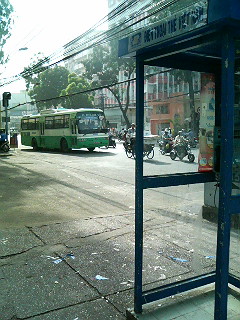   
"Vo also said that high participation of foreign investors would help to reduce the prices of houses in Vietnam, which in recent times, have exceeded the financial capabilities of most of the population..."
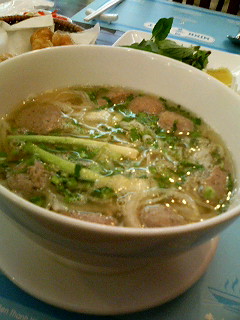   
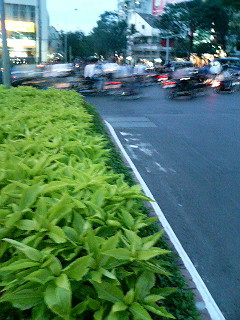 AS IN ANYWHERE ELSE IN THE WORLD, LOCATION IS A VERY IMPORTANT FACTOR IN CHOOSING WHERE TO BUY OR RENT IN HO CHI MINH CITY. If you are new to this place, then perhaps a geography lesson is not out of place here. According to Easy Property, one of Vietnam's largest real estate agents, there are certain parts of town which are favored by expatriates. They include the CBD (Central Business District) of Districts 1 & 3 (for the convenience, naturally), and the greenery and clean air of the An Phu, Thao Dien, Binh An Wards of District 2 (just over the Saigon Bridge @15-20 minute drive). Other increasingly popular areas are in Tan Binh (around the airport @20-30 minute drive); and around the ever developing Saigon South area of District 7 (20-30 minutes drive)." If you are an expat attempting to establish yourself in Saigon, perhaps you ought to check out these places first. AS IN ANYWHERE ELSE IN THE WORLD, LOCATION IS A VERY IMPORTANT FACTOR IN CHOOSING WHERE TO BUY OR RENT IN HO CHI MINH CITY. If you are new to this place, then perhaps a geography lesson is not out of place here. According to Easy Property, one of Vietnam's largest real estate agents, there are certain parts of town which are favored by expatriates. They include the CBD (Central Business District) of Districts 1 & 3 (for the convenience, naturally), and the greenery and clean air of the An Phu, Thao Dien, Binh An Wards of District 2 (just over the Saigon Bridge @15-20 minute drive). Other increasingly popular areas are in Tan Binh (around the airport @20-30 minute drive); and around the ever developing Saigon South area of District 7 (20-30 minutes drive)." If you are an expat attempting to establish yourself in Saigon, perhaps you ought to check out these places first.
A little more information about District 2, again from Easy Property: "The area on the far side of the Saigon bridge is, by Saigon standards, a green & pleasant land. Though still true, more and more of the green land plots (and they have all, frequently, been sold many times over by speculators) are now being developed into houses, with a few of the larger plots turned into apartments or more residential compounds. Several hundred expats (most with families) live in the area and there is the usual assortment of expat spin-off services and facilities: a supermarket, sports, leisure & recreation clubs. Most of the villas are two storey and from 700sqm to 1,500sqm gross, with usable areas range from @250sqm upwards, and many with swimming pools. Inside the various compounds, sizes are smaller but with the benefit of communal facilities and landscaping & security. Consequently, for those expats with above average budgets and a longing for some peace and quiet, amid what must be the noisiest city in the world, or with children, An Phu has deveoped a reputation since it still has some large properties with walled gardens or in landscaped compounds, that no longer exist elsewhere in the city."
And regarding District 7: "The formation of the Saigon South urban area on 2,600 hectares is meant to create conditions for urban and rural districts in the surrounding areas of District 7, District 8, Nha Be and Binh Chanh to develop. With the (at long last), construction of a couple bridges, Saigon South is no longer only accessible via the inadequate Kinh Te bridge by the Saigon Port. It is now possible to travel from the Phu My Hung (PMH) New Residential Area (often referred to as Saigon South) to the CBD in 15 minutes. After years of relative inactivity, the 600 hectare @USD$250m PMH Joint Venture have started construction of the first of many planned apartment buildings and houses. Several international schools; the Franco Vietnam hospital; RMIT (Royal Melbourne Institute of Technology) University; and other such ancillary service suppliers & facilities have also committed to a future amongst the landscaped greenery. The gre USD$632m Thu Thiem New Urban Area of Dinam/ngabridge.jpg" width=163> << << o n l i n e + r e a l t o r s
Bat Dong San: www.tinbatdongsan.com/vn/.
BẤT ĐỘNG SẢN is of course Vietnamese for real estate, and from a SEO perspective at least, this site has the market cornered. Viewable in English and Vietnamy?
"You are very busy to sell or rent them?
"Let us do that for you.
"With reasonable fees 1% of total value for each sold property or 1 month rental for each leased property or you allow us to earn the markup value if you donE½ft want to pay the above fees.
"Just fill out the Form then send to us with 1 – 8 photos of your property to: info@tinbatdongsan.com..."
Craig's List: http://vietnam.craigslist.org/rfs/.
Like other invaders from the past, Craig is on his way to conquering Vietnam. Well, at least the classified real estate market in Vietnam (and they say that land equals power!) For the latest offerings from Ho Chi Minh City, hit Craig up.
Easy Property: Phone: 848/840 7962. Web: www.izproperty.com/.
This website touts itself as Vietnam's premier real estate services network. It is a big claim to make, but the listings at Easy Property are in a word, exhaustive. A huge range of properties are listed, ranging from serviced apartments in District 3 (the rent is between US$1100 to $2100 a month) to potential golf course sites in Dong Nai Province, to the entire Hoa Binh Towers in the capital Hanoi, to "possibly the best villa in An Phu" (that one is going at US$6000 a month in rent.)
Along with all the listings, Easy Property has realms of important information about the state of the rental and real estate market in Vietnam. There are nuggets of information like this, concerning international standard serviced apartments: "Ho Chi Minh City only has a combined stock of serviced apartments of about 2,000 units, an inadequate number relative to the ever increasing demand. Thus rentals have almost doubled in less than 5 years to the current levels. However, local investors have recently seen the investment opportunities available and are thus now rapidly filling the supply gap with a wide variety of new developments, both big and small. By the end of 2006, it is estimated that the number of units available will have doubled to over 4,000 units with several thousand more under construction. Though many of these are being built for sale on the local market (foreigners are unable to buy or sub-lease), many are being bought to rent to expats, at prices ranging from USD$800 – Ubr>
"However, given the relatively stable number of expats living in Vietnam, coupled with strict new foreign employment registration stipulations, and the dramatic increase in stock, one can foresee rentals falling to levels more in line with those of ASEAN regional competitor cities over the course of the next few years.
"The largest and best located serviced apartment buildings with the widest range of facilities and services were constructed in the mid to late 1990's by foreign developers with deep pockets – typically USD$20+ million Joint Ventures. Since then, very few foreign investors have ventured into the domestic market. These established buildings have all had average occupancies of over 90% since @2002 and so are able to command premium rentals. Some offer short term accommodation (at up to USD$50/sqm per month) but many have waiting lists and so are only interested in minimum 12 month contracts. The majority of these are in the downtown area but some are a 20 minute commute."
"There are similar developments in the central region around Dalat, and in the north, particularly in Hanoi. We intend to expand these pages over time to cover the nation."
"
The site boasts a section called Monday in Saigon, a photographic database of developments in the business capital over the years. Monday in Saigon promises:
"Many people interested in Vietnam, both those living here and abroad, enjoy photos of boys on water buffalo, women in conical hats of straw, street vendors hawking almost everything, the polychrome vistas at outdoor markets, and the fast-moving motorized traffic, peppered with ox-drawn carts.
"Foreign and Domestic visitors to HCMC rarely lift their heads up to see all the new signs of economic growth. Most are too busy running and dashing about, looking forward. Particularly when driving or crossing the streets of this bustling metropolis, rarely do we lift our eyes to see what has grown around us.
"The V V G Staff began taking photos for these pages in December 1997. We are constantly updating them to keep up with developments. The most recent photos were taken only days before this page was last updated.
"Here are photos of vertical construction. We want potential investors to see the City of today and tomorrow, not just yesterday. Every new building pictured has been completed in the past four years. We also show buildings in which construction waits to recommence, and sites where it has not ever begun. A few older structures recently renovated are also shown simply to retain the flavor of what is still Saigon."
   
h i g h r i s e + d e v e l o p m e n t s
ONE OF THE AMAZING THINGS ABOUT VISITING HO CHI MINH CITY REGULARLY IS NOTICING JUST HOW FAST THE SKYLINE OF THIS CITY CHANGES. New buildings go up all the time, transforming this once low-rise sprawling tin shack kind of city into another Oriental supermetropolis -- another Bangkok or Singapore. Inside those high-rise steel and glass needles are often where foreign residents prefer to live. If you want to know about coming developments of a high-rise nature, you are in the right subdirectory.
Before we start, here is a word from San Francisco architect Mel Schenck, who wrote: "Most of the housing in Ho Chi Minh City, like all of the other cities in Vietnam, is four or five stories tall. This is true for new middle-class houses even in the smaller villages. I understand there is some new high-rise housing in Hanoi in the new suburban new urban areas, but I did not get out to see them. In HCMC, some Taiwanese investors built a new high-rise apartment complex in the Cholon (Chinese) area of Saigon. Very few of these apartment or condo units have been rented or sold. In speaking with some HCMC citizens, they felt that they had not sold because the units are too expensive compared to normal units in Saigon, and the Vietnamese much preferred the walk-up four-story houses to the elevatored high-rise housing. This is certainly counter to the Chinese pattern of replacing low-rise housing in all of their cities with high-rise housing.
Interestingly, the density of population per hector or acre for these high-rises is about the same as low-rise housing since these new high rise towers are usually towers in the park with a lot of space (usually wasted, in my opinion) around them. I vote with the Vietnamese -- I prefer my density in active low-rise units rather than sterile units in the sky, unless the high-rises are as dense as in Hong Kong."
<<
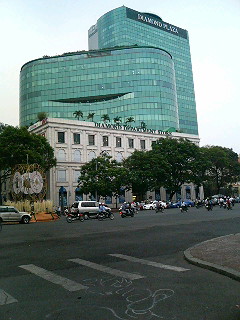 Diamond Plaza: 34 Le Duan St (corner of Pham Ngoc Thach St), District 1. Phone: 848 825 7750. Email: ibcourt@diamondplaza.com.vn. Web: www.diamondplaza.com.vn/. Diamond Plaza: 34 Le Duan St (corner of Pham Ngoc Thach St), District 1. Phone: 848 825 7750. Email: ibcourt@diamondplaza.com.vn. Web: www.diamondplaza.com.vn/.
When I first internationalism. As its managers claim, Diamond Plaza is an integrated development, the largest in Vietnam, with entertainment, shopping, apartments and offices all under the same roof:
"Our landmark building overlooks many of the City's famous sites, including the Reunification Palace, Notre Dame Cathedral and April 30th Park, the City's most mature green space.
"Diamond Plaza's one, two, three and four bedroom fully furnished, serviced apartments are amongst the most spacious in Vietnam, having internal net areas of between 83-240 square meters. The size and luxurious finish to these apartments, together with the fantastic views of the city they offer, have quickly allowed Diamond Plaza to achieve the status of Ho Chi Minh City's premier residential address.
"All apartments are fully air-conditioned and free internet access is now offered to all Tenants. For convenience, parking is located in the basement of the building. To complete the total sense of well being associated with residence at Diamond Plaza, membership to the executive fitness club and 14th floor terrace swimming pool is provided at no charge, as a part of the tenants' package."
<<
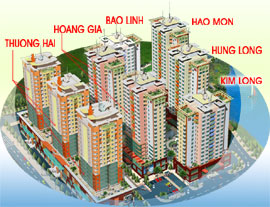 Hoang Quan Plaza: 34 Le Duan St (corner of Pham Ngoc Thach St), District 1. Phone: 848 825 7750. Email: ibcourt@diamondplaza.com.vn. Web: www.diamondplaza.com.vn/. Hoang Quan Plaza: 34 Le Duan St (corner of Pham Ngoc Thach St), District 1. Phone: 848 825 7750. Email: ibcourt@diamondplaza.com.vn. Web: www.diamondplaza.com.vn/.
Plaza seems to be the buzz word of the decade in Vietnam, it creeps up in development names as insidiously as "Hills" does in Tokyo, Japan. There are any number of "plazas" in Ho Chi Minh City and greater Vietnam at the moment, none of them true plazas in the Italian sense of the word. It doesn't matter, because Tokyo doesn't really have any real hills (unless you count tall buildings as hills.) In Asia these days English or Italian or French words are only used for decoration, the same way westerners cook Asian dishes at home without comprehending the cultural matrix from which they sprung. Postmodern, but potlatch it ain't.
This particular non-plaza is located in the going off south of Ho Chi Minh City, near the Nguyen Van Linh highway.
Comforts:
- The apartments are designed luxuriously, modernly, and warmly.
- Restaurant, health care center, swimming pool, recreation-shopping center, kindergarten, park, basement garage, E½c
- Professional management board and security staff make sure 24/24 security.
- Intercom/Video phone systems help the hosts to easily identify their guests.
- Elevators and stairs are set up reasonably to make sure thorough and safe transport.
- Central gas and American technological Notifier automatic fire alarm systems are installed at each apartment.
- Intelligent cool and light systems.
The Panorama.
The Panorama tọa lạc trong khu Kênh Đào (được mô phỏng theo Khu Kênh Đào tại Mỹ) vốn dĩ từ lâu như tự hữu một �chiếc máy điều hòa khổng lồ�Etừ thiên nhiên cảnh quan bao quanh. Trong đó, tự nhiên sắp sẵn những hình khối theo �tone�Exanh chủ đạo với nhiều biến tấu: gam xanh của dòng sông cảnh quan dọc theo thế đất, bên kia sông là mảng xanh dự kiến quy hoạch sân Golf 36 lỗ; trên là bầu trời trong vắt nối liền hai mảng xanh ấy như một đường chân trời xa xa mà khoảnh khắc nào trong ngày cũng có thể tận hưởng; gần hơn là hai mảng xanh công viên đô thị rộng với diện tích cộng gộp gần tròn 16ha gần như viền gọn ôm Khu Kênh Đào ở giữa. Có ví von Kênh Đào là một �thành phố của cảnh quan và gió�Ethì cũng chẳng có gì là quá bởi sự giao hòa của thiên nhiên hoa lá, sự kết hợp mặt nước, bầu trời, sự gặp gỡ của nắng, của gió và bản hòa tấu của những âm thanh tự nhiên như tạo nên một bức tranh đẹp đưa luồng gió mát ùa vào từng ngôi nhà trong Khu Kênh Đào. Trong cảnh sắc ấy, The Panorama sang trọng với 6 building kiêu sa vươn cao ngay cửa ngõ phía Tây vào Khu Kênh Đào.
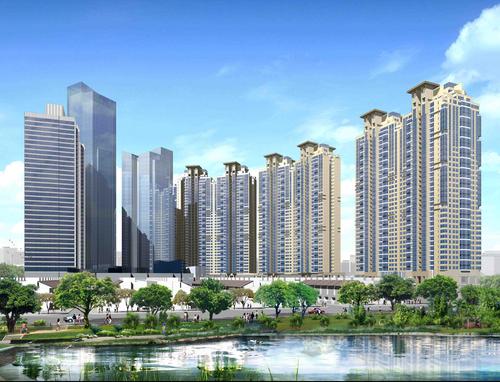 Saigon Pearl: 92 Nguyen Huu Canh Street, Binh Thanh District. Phone: 848/821 9999. Web: www.saigonpearl.com.vn/home.htm. Saigon Pearl: 92 Nguyen Huu Canh Street, Binh Thanh District. Phone: 848/821 9999. Web: www.saigonpearl.com.vn/home.htm.
According to the promotional material, Saigon Pearl, a high-rise apartment complex on Saigon River, represents "the largest, most elaborate development ever created in Vietnam." Due to come online from 2007 to 2009, Saigon Pearl incorporates eight 37-storey apartment buildings, a lavish clubhouse, two office towers and a large-scale shopping mall. Quoting from that promotional material again: "Picture living right beside the enchanting Saigon River, surrounded by a tropical paradise of natural and landscaped gardens. Watching clouds of mist swirl across the water as you prepare for the day ahead. Here, secluded from the rush and roar of daily life, the natural beauty of the scenery constantly seduces you..."
The following properties are available for sale: two-bedroom unit, three-bedroom unit, and penthouse. Visit the website listed above to find about pricing and other details.
<<
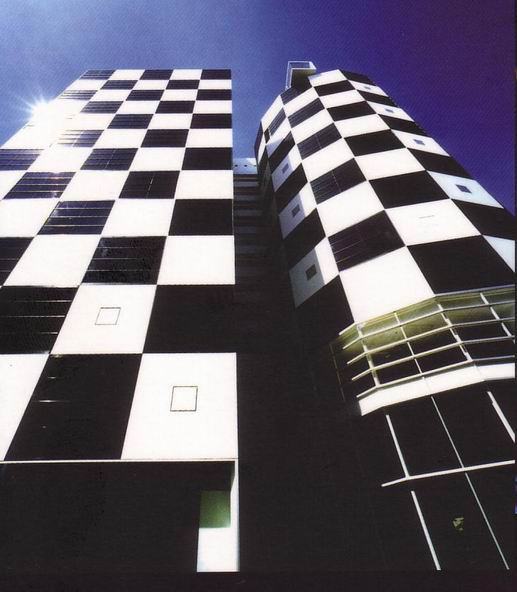 Zen Plaza: 54-56 Nguyen Trai Street, District 1. Zen Plaza: 54-56 Nguyen Trai Street, District 1.
Zen Plaza is a 14-storey tower in the heart of Saigon consisting of an 8-storey shopping complex, five floors for offices and a penthouse for events. Hit Chaocom if you are interested in hiring some of that office space. You will also be able to see floorplans and a price list. The building itself is something of a landmark with its distinctive black and white facade, and is a popular meeting place. I myself was due to meet Jennette, a local Chinese lass, outside the front of Zen during my visit back in March 2007, but the venue was changed to Ben Thanh Market. True to the Japanese sounding origin of the tower's name, on the 7th floor of the Zen Plaza you will find the Sushi Bar, whose motto is "not only tasty but funny". In fact, this whole building is like a little chunk of Japan dropped into the heart of Vietnam, and thriving in its new environment. At Zen Plaza, the emphasis is on fashion.
According to the Ho Chi Minh City People's Committee: "In August 1999, Nhat Nam Shopping Center was put into operation as a joint venture between Vietnamese and Japanese partners. In August 2002, the Ministry of Planning and Investment endorsed the plan to turn the joint venture into a 100% Japanese-owned project, and in October 2003, Zen Plaza came into being.
"The difference between Nhat Nam and Zen Plaza is that Zen specializes in fashion. 'We see Vietnam's potential in this industry,' Fukukawa says. 'First, many more Vietnamese are interested in fashion as the economy develops.' Another reason for Zen to be a fashion center is because this 12-story building is on the part of Nguyen Trai Street dubbed Saigon's fashion street. A third reason is that Vietnam has a strong garment industry and a contingent of young and talented designers.
"However, these young designers are encountering difficulties in developing their career. 'They lack professional training, lack materials to realize their creations, lack a stage to make the public know about their designs and lack capital for start-ups,'
Fukukawa says.
"One of Zen Plaza's ambitions is to help bridge these gaps by providing young designers with finance and space so that they have a place to show their creativity. Zen is one among a few organizations in Vietnam to hold regular fashion shows. These shows always feature young designers. 'We were a co-organizer of the Vietnam Collection Grand Prix 2004, the biggest stage for Vietnam's young fashion designers,' he says.
"In 2005, Zen Plaza will push its plan to produce garments under the Zen brand. Japan and some other countries are the target markets. 'Some foreign customers are interested in Vietnamese designs for sale at Zen Plaza,' he says. 'But sizes are a big problem. We all know that measurements of Europeans are quite different from those of Vietnamese. Therefore, we must pay attention to this difference...'"
   
c o m i n g + d e v e l o p m e n t s
THERE IS ALWAYS SOMETHING GOING ON IN HO CHI MINH CITY, SOME NEW DEVELOPMENT OR MAJOR PUBLIC WORKS PROJECT. Here are some of the latest developments and coming attractions:
<<
 Asiana Plaza: 39 Le Duan Boulevard, District 1.
Asiana Plaza: 39 Le Duan Boulevard, District 1.
If you think the name of this 13,600 square metre complex has a vaguely Korean sound, you would be right: it was developed by a partnership including Kumho, the 8th largest conglomerate in South Korea and the owner of Asiana Airlines. As with all great developments there has been a lot of controversy with the development of Asiana Plaza, but at the start of 2008 I did a walkby of the site with my new Vietnamese girlfriend, and it seems to be coming online. Surrounded by Le Duan, Hai Ba Trung, Nguyen Du and Le Van Huu streets, Asiana Plaza when finished will comprise a luxury apartment building, a five-star hotel and retail stores.
As VietnamNet reported: "As planned, Asiana Plaza, invested in by Asiana Plaza Saigon, a member of the Republic of Korea's (ROK) Kumho Group, has the total investment capital of $223mil. The complex will cover an area of 13,632 sq m at No 39 Le Duan street in district 1, the most advantageous position in the city, which many investors have been eyeing.
"The complex will consist of three buildings, including a 21-storey office building, a 21-storey international hotel, a 32-storey apartment building, and a trade centre area.
"The complex will be situated near other high-grade buildings of the city, including Diamond Plaza, Sofitel Hotel, Prudential's office building, Saigon Tower and Metropolitan. It will also not be far from the buildings of the US and French General Consulate, Cathedral and the city's Post Office. Located in such a position, the complex will be especially valuable and it is hoped will bring a new face to the city.
"Bok Sang Chang, Director General of KumhoAsiana Plaza Saigon, is optimistic about the business performance of the project once it becomes operational. He said that the demand for accommodation and apartments will increase sharply when more and more foreign investors come to Vietnam in the coming time. InterContinental Hotels, which is well known in the world for hotel management, will manage Asiana PlazaE½fs hotel and apartments.
"Mr Chang said that the operation of the complex will serve as an opportunity to develop tourism in Vietnam. Kumho is planning to set up a golf course in HCM City, and cooperate with Kumho Airlines and Korea Airlines to carry passengers from the ROK and China to HCM City.
"In the immediate time, the construction of the project will generate big demand for services, while creating several hundred jobs for city residents until 2009..."
River Garden: Ho Chi Minh City (HCMC), District 2.
This development, which is anticipated to be completed in April 2008, will feature 36 two and three-bedroom units overlooking the Saigon River. The facilities will include: outdoor swimming pool, tennis court, badminton court, basketball court, handball court, childrenâs playground
The zoo has two gates: the main gate is on Nguyen Binh Khiem Street at the corner of Le Duan Street, and the other one is on Nguyen Thi Minh Khai Street
The Saigon Zoo and Botannical Garden is at 2B Nguyen Binh Khiem Str., Ben Nghe Ward, Dist. 1, Ho Chi Minh City Tel: (08)8293728 - Fax : (08) 8.228.309 - Email :info@saigonzoo.net. Official website: click here.
|
UNCLONED WORLD
Contact us by email: coderot@gmail.com
phone: (090) 6039-9341 (JAPAN)
|
|
|












